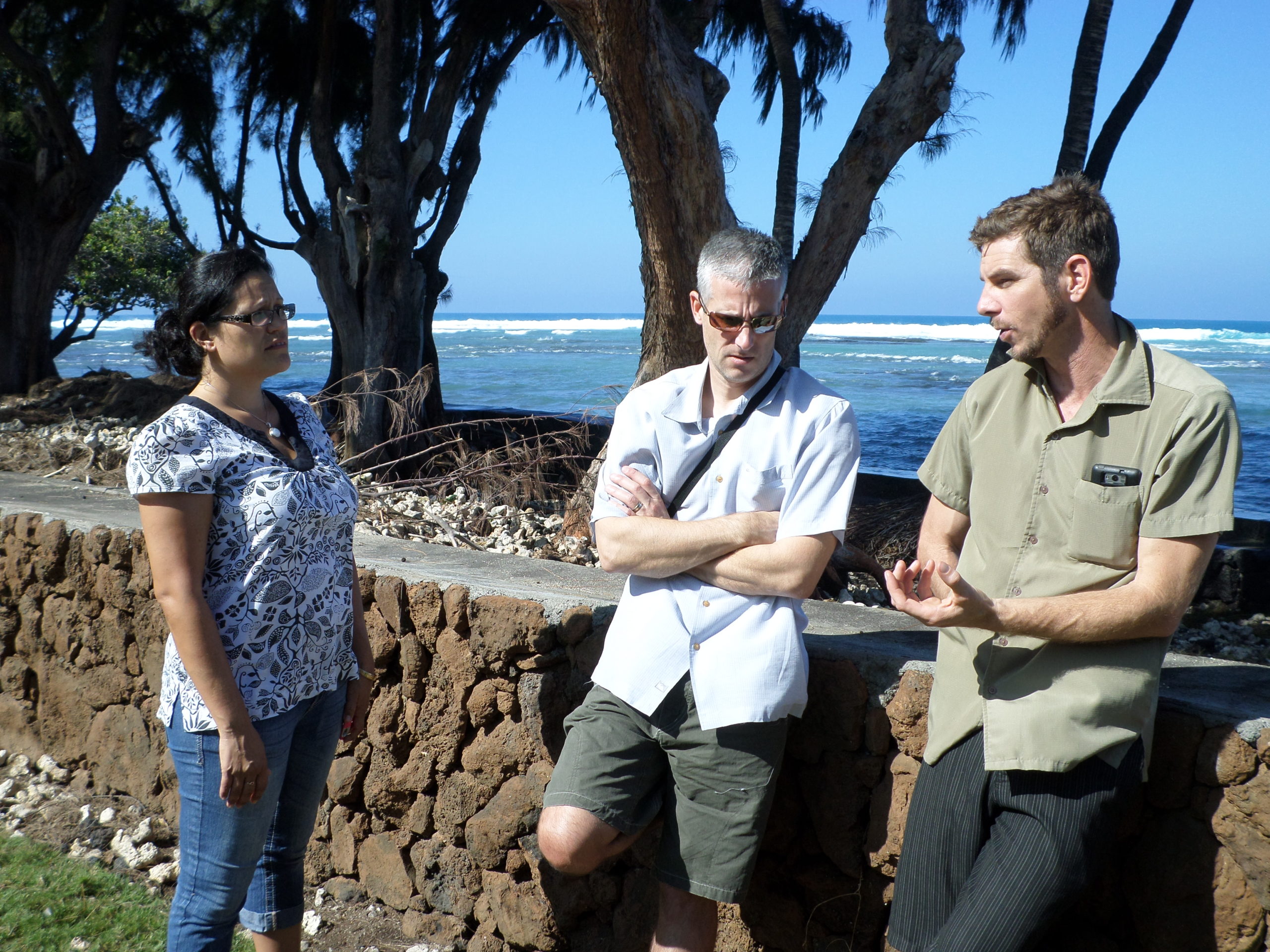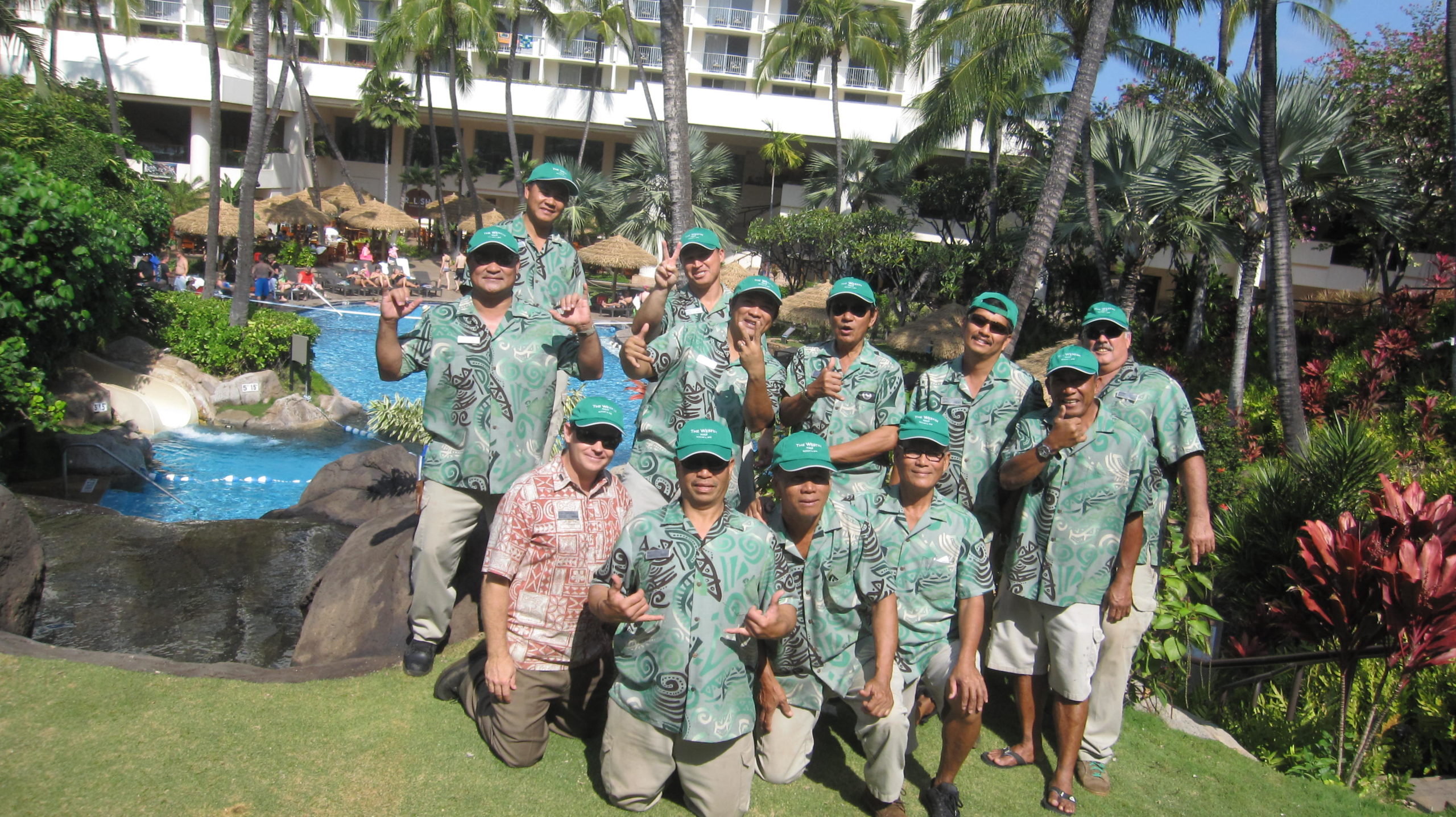
One of the things I love most about our staff at the Coral Reef Alliance is that we all share the same passion for coral reefs. So for those of us in our headquarters office in Oakland, California, it’s always a treat when we get to travel to our field sites and see the reefs we work so hard to save. I recently had a chance to travel to Hawai‘i with a few others from headquarters and meet with our field team there.
Much of our week-long visit was focused around a single question: what do we need to do in the next five years in order to save coral reefs in Hawai‘i? On the surface, it sounds simple enough. We know that coastal pollution is a primary threat to reefs in Hawai‘i. So as long as we can reduce the amount of runoff entering the marine environment, we should be good, right?
It’s once we actually started delving in to that answer, and the process and needs started to unravel, that I realized just how complicated the situation actually is. For starters, the pollution that’s entering the marine environment in Hawai‘i is coming in different forms, from different sources. It’s wastewater coming from injection wells and cesspools, stormwater runoff coming from landscapes, and sediment runoff coming from fallow agriculture land and construction sites. Which means there are multiple stakeholder groups with a variety of interests, complex social structures, and embedded organizational and political systems that all need to be involved in protecting coral reefs.

So our work isn’t as simple as saying we need to address the primary threat to reefs. Instead, our work is about restoring entire social and natural systems. During our strategic planning meetings, the word ahupua‘a came up a lot. Traditionally, the Hawaiian word refers to a slice of land, ranging from the tops of the mountains down to the sea, that follows the natural boundaries of a watershed. But there’s more to it than just the land and the sea—there are also the communities, the businesses, the politics and the social networks included in that word. In order to really save coral reefs, we have to restore entire ahupua‘a to their healthy and functioning natural states—not just from the environmental side, but also from the social side.
So what does that mean? It means we have to overcome the emotions and systems that are preventing us as a society from taking action toward restoring the health of the marine environment and in turn, the health of local communities. And in order to do that, we must be able to demonstrate that protecting coral reefs leads to good things. We must be successful in the work that we’re already doing—working with hotels along the Ka‘anapali coastline of Maui to prepare them for using recycled water and adopting LID (Low Impact Design) practices in their landscapes; working with the stakeholders of the Kahekili Herbivore Fisheries Management Area (KHFMA) to protect herbivore populations from overfishing along the Ka‘anapali coastline; working with the Puakō community on Hawai‘i Island to reduce the amount of wastewater entering the marine environment from individual homes; and of course, building partnerships with other organizations, businesses, and individuals who are also working to protect Hawai‘i’s coral reefs. If we can do all of this, and demonstrate that these projects have real life impacts, we have a better chance of motivating others to adopt practices that will help protect coral reefs, one of the unique natural wonders that make Hawai‘i special, for generations to come.
One of the highlights of the trip for me (aside from seeing whales breaching off the coast of Maui!), was talking to Duane Sparkman, the Engineering/Landscaping Manager at The Westin Maui Resort & Spa. He’s a real advocate for the environment, and has changed the Westin’s landscape practices to reduce their impact on the near-shore reef. He uses compost instead of chemicals, is building rain gardens and designing the landscape to catch stormwater, and is preparing the hotel to use recycled water on their landscape. By doing so, he’s creating a more sustainable future for the Westin, and setting up systems that will lead to cost savings in the long run. And the landscape looks prettier—the plants are healthier and the grass is greener.

Sparkman is the perfect partner and spokesman for what we are trying to accomplish. His landscape is a critical part of the ahupua‘a—it’s the last line of defense, the property closest to the coral reefs. Having his landscape designed to catch sediment and prevent stormwater runoff is a major factor in restoring the health of the watershed. And he’s demonstrated success—by putting coral reefs at the forefront of his decisions and actions, he’s positively impacting the business and he’s enhancing the guest experience.
“I just want to do the right thing for the environment,” says Sparkman. “If this reef dies, what did I do? I didn’t do the right thing. The ocean is the jewel. That’s the thing we’re trying to save. It’s not about me.”
While I absolutely love Sparkman’s humility and selfless rationale, I have to disagree with his last sentence. Saving the reef is about him, and it’s about me, and it’s about you. Saving the reef means we protect livelihoods and economies. It means we protect our homes, businesses, and hotels from wave action. It means we have healthy, nutritious food to eat. It means we can find the cure to horrible diseases and have necessary medicines. Saving the reef is about keeping us, and our planet, healthy. We have no choice but to keep saving coral reefs, and I’m so glad we have such tremendous partners and supporters to help us do just that.